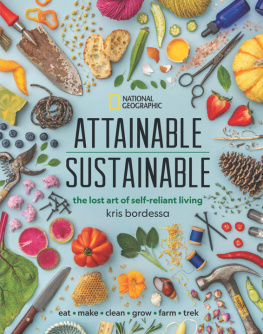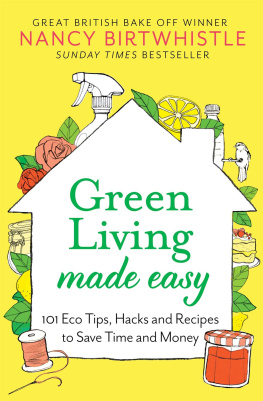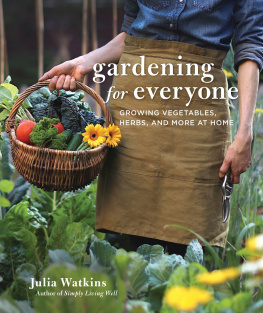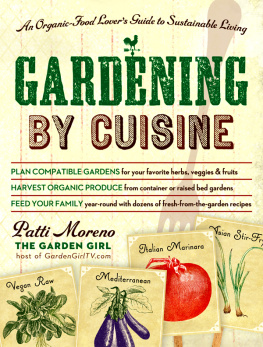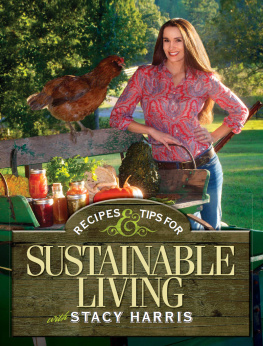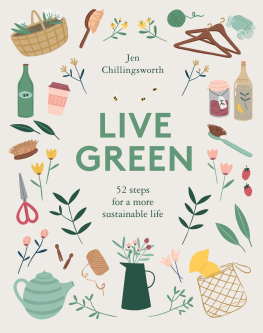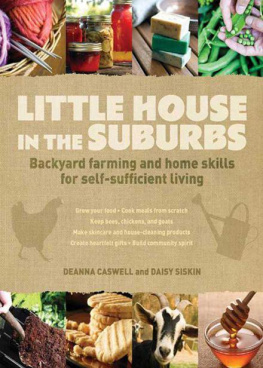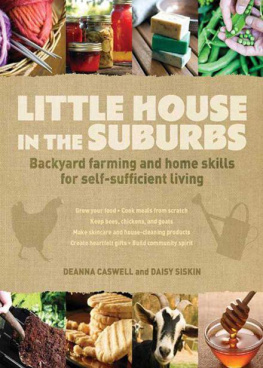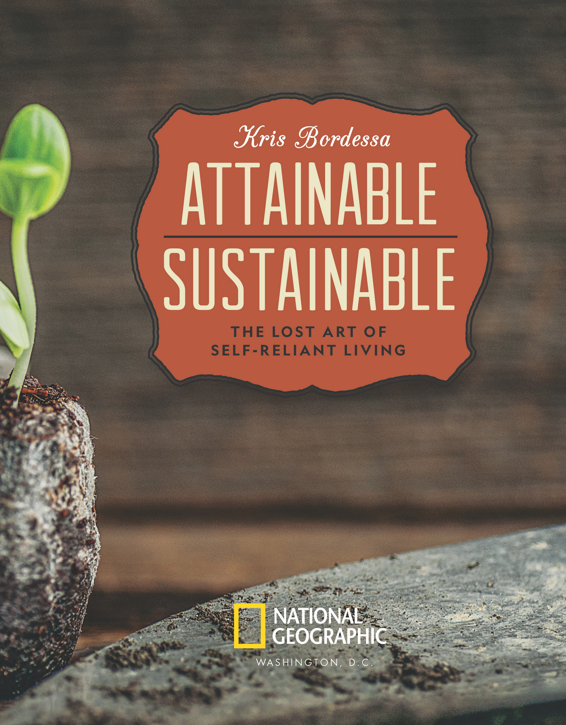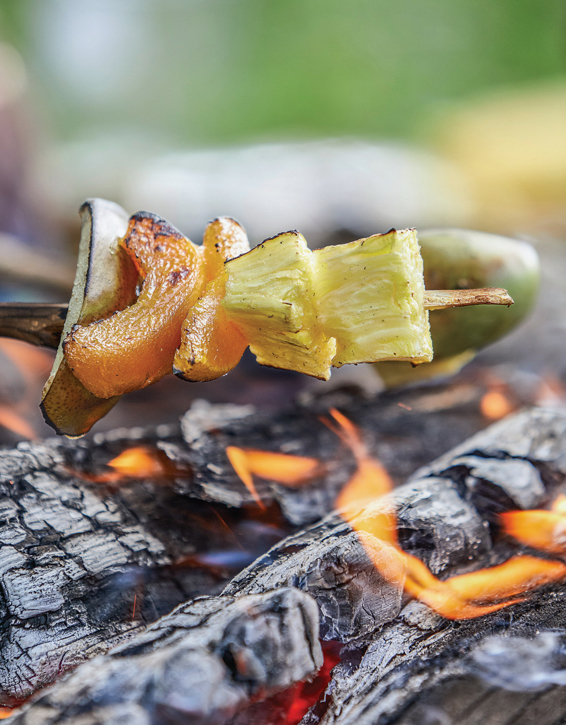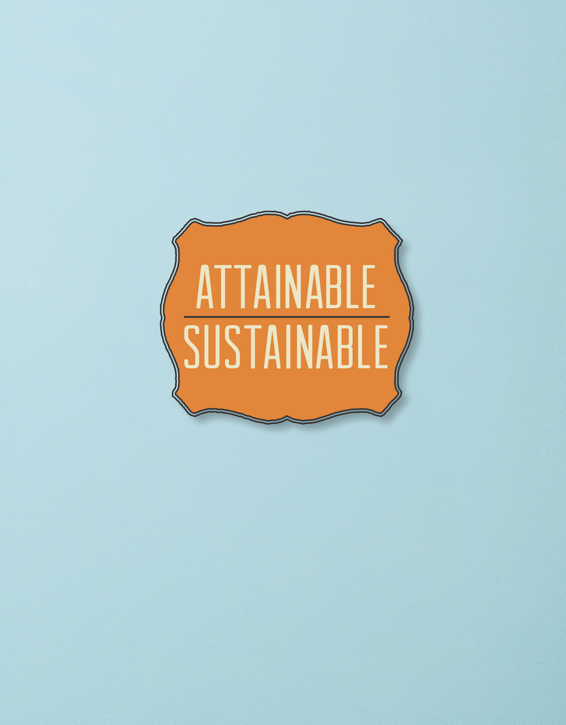
Before trying a recipe, read the recipe and make sure youre not allergic to any of the ingredients. Because herbs, spices, and certain solutions can interact with medications or affect some medical conditions, you should always consult with your medical doctor before using any of the herbs, recipes, or other products described in this book to address any health concerns specific to you. All food preservation or canning advice is given for information purposes only and has not been evaluated by the FDA or USDA. Readers are encouraged to review the USDA website for recommendations for canning at home. The author and publisher disclaim any liability whatsoever with respect to any loss, injury, or damage arising out of the use of the information contained in this book or omission from any information in this book. Mention of specific products, companies, or organizations does not imply that the publisher and author of this book endorse such products, companies, or organizations. This book is designed for informational purposes only and is made available to the public with the understanding that the author and the publisher are not rendering medical, healthcare, or other professional advice.
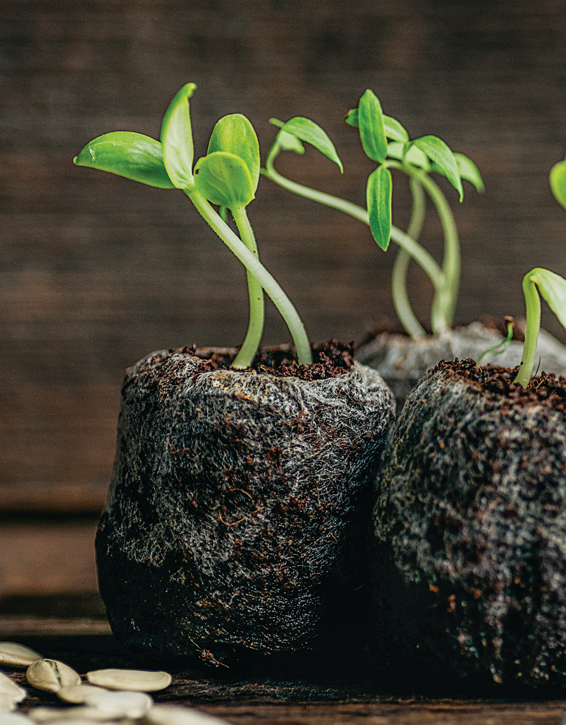
New seedlings wait to be planted.
Since 1888, the National Geographic Society has funded more than 13,000 research, exploration, and preservation projects around the world. National Geographic Partners distributes a portion of the funds it receives from your purchase to National Geographic Society to support programs including the conservation of animals and their habitats.
National Geographic Partners
1145 17th Street NW
Washington, DC 20036-4688 USA
Get closer to National Geographic explorers and photographers, and connect with our global community. Join us today at nationalgeographic.com/join
For information about special discounts for bulk purchases, please contact National Geographic Books Special Sales:
For rights or permissions inquiries, please contact National Geographic Books Subsidiary Rights:
Text copyright 2020 Kris Bordessa. Compilation copyright 2020 National Geographic Partners, LLC. All rights reserved. Reproduction of the whole or any part of the contents without written permission from the publisher is prohibited.
NATIONAL GEOGRAPHIC and Yellow Border Design are trademarks of the National Geographic Society, used under license.
Library of Congress Cataloging-in-Publication Data
Names: Bordessa, Kris, author.
Title: Attainable sustainable : the lost art of self-reliant living / Kris Bordessa.
Description: Washington, DC : National Geographic, 2020. I Includes bibliographical references and index. I Summary: Based on the blog of the same name, Attainable Sustainable shows readers how to live a simpler, more self-reliant life. It includes instructions not only for growing and cooking food but also for creating artisanal items for the home as well as navigating the great outdoors Provided by publisher.
Identifiers: LCCN 2019030815 | ISBN 9781426220548 (hardcover)
Subjects: LCSH: Sustainability. | Sustainable living. | Self-reliant living.
Classification: LCC GE196 .B67 2020 | DDC 640dc23
LC record available at https://lccn.loc.gov/2019030815
Ebook ISBN9781426221859
19/EV/1
a_prh_5.5.0_c0_r0
Marshmallows are a campfire staple, but try roasting fruit over open coals for a sweet treat.
Dip sprigs of lavender into a jar of honey to infuse with gourmet flavor (recipe on ).
INTRODUCTION
Before the days of pizza delivery, ready-made meals, and self-checkout lines, people were do-it-yourselfers by default. What couldnt be had at the dry goods store was made at home from simple ingredients or materials out of pure necessity: There just wasnt another alternative.
People knew how to make food. They knew how to raise food. They sewed and weaved and brewed. They understood the pull of the seasons, and what those seasons meant for their family.
Times certainly have changed. The dry goods store is now a superstore packed to the rafters with items that Ma Ingalls couldnt have dreamed up. And although theres certainly a place for some of the convenience items weve come to depend on, we as consumers seem to be yearning for simplicity. Canning jars and pectin are once again readily available at many supermarkets, and cast-iron pans and butter churns are making a comeback. In a high-tech, somewhat disconnected society, it seems that handwork and home cooking provide a much needed touchstone.
My own meandering path of simple living has ebbed and flowed through a modern-era landscape. As I was growing up, my mom taught me to make (and preserve) homemade jam that was frequently slathered on slices of Wonder Bread. My parents and grandparents were gardeners, so I learned how to grow vegetables from them. (But I shudder to remember my seven-year-old self in charge of the fun shaker can full of diazinon, an insecticide that was banned for residential use decades later.) While I snacked on miners lettucean edible wild greenafter school every spring, at the dinner table we consumed more conventional alternatives like a head of iceberg lettuce. (Who eats weeds? my mom might have asked.)
My efforts at self-reliant living are founded in the simple fact that I learned to cook (mostly) from scratch at my mothers elbow. I gardened, sewed, camped, used power tools, and preserved food. And although in hindsight the execution appears somewhat flawed, I nevertheless had a base of knowledge to build on as I shifted my lifestyle to include healthier, less toxic options for both my family and the world around us.
I started reading labels in earnest when my children were little; one of my sons was having what the pros might call behavioral issues. After months of experimenting with his diet, I realized that food dyes in particular were wreaking havoc. If we avoided food with dye, his behavior was that of a normal preschoolerbut with it, he became a wild child. These experiments were purely anecdotal, but as they say, the proof is in the pudding. Comparing his behavior with and without food dyes on many occasions, we soon had a very clear visual of how what he ate impacted him.
And I wondered: If food dyes are problematic, what about all those other unpronounceable ingredients in commercially prepared foods? Thus began my swing toward the other end of the pendulum.

